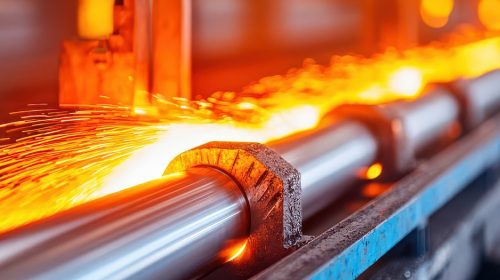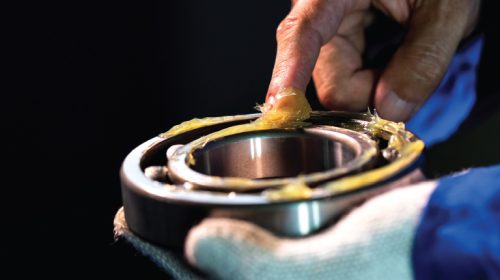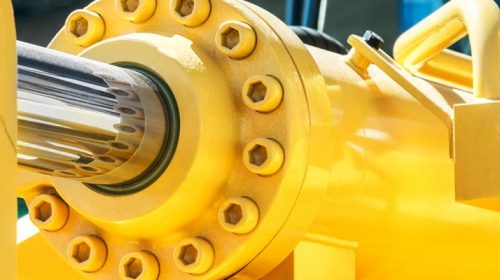If you use mould release agents that are partially or entirely based on kerosene, perhaps it is time to think again. What may seem like a low-cost option, in fact comes at a cost.
Kerosene can be a significant fire risk as it is highly volatile, combustible and can be classed as a flammable, depending on the flash point. It requires careful storage and can incur the extra cost of ADR transportation. It is also toxic to aquatic life.
As an alternative, Q8Oils offers a comprehensive range of mould release agents, which includes high quality products based on high quality mineral oils and non mineral base fluids suitable for a variety of applications, such as precast concrete, aerated concrete, asphalt, fibre cement and tiles.
Clear, odourless, with a high flash point and low volatility, they are safer to use and less harmful to the environment. You can expect outstanding performance too.
Unlike kerosene-based products, Q8Oils mould release agents are formulated with carefully selected additives that form a chemical barrier between the mould and concrete. This ensures easy release and a smooth surface quality of the concrete. It is important to select the most appropriate mould release agent depending on the mould and the material. At Q8Oils we appreciate that this can vary significantly so have a range of products to suit the application and conditions resulting in a high quality finish without leaving a problem on the mould so it can be used again with ease.
Key requirements of a mould release agent;
- Perform an easy separation between the mould and form
- Impart no defects on the form surface i.e.no pores or shrinkage
- Do not impair the form to the adhesion of plaster, adhesives & coatings
- Impart no colour onto light coloured forms
- Leave no residue on the mould and provide easy cleaning
- Protect the mould for prolonged use
- Provide corrosion protection to the mould
- Protect operators to provide a safe & healthy working environment
- Minimise impact on the environment
- Maintain a cost effective solution
How do mould release agents work?
Mould release agents work by forming a barrier between the mould and the concrete. This can be a simple physical or a chemical barrier. A chemical barrier is more efficient in that it forms a much thinner uniform barrier. It does this by interacting with the mould surface and reacting with the cement and the additives present in the de-moulding agent resulting in the formation of a soap.
| Type of Mould Release Agent | How it works | Advantages | Disadvantages |
| Barrier Type | creates a physical barrier between the mould and the concrete | low cost | staining/ discolouration surface defects, evaporation |
| Chemical active type | creates an active layer between the mould and the concrete preventing adhesion | easy removal, clean mould, less surface defects | acid value can cause corrosion |
| Friction modifier type | creates a high polar, low friction layer at the mould surface preventing adhesion | easy removal, clean mould, less surface defects, suitable for complicated shapes | higher cost then barrier type |
| Emulsion (Water in oil, Oil in water) | water evaporates or is absorbed into the concrete leaving an active layer between the mould and the concrete | high surface finish (architectural) | risk of corrosion accuracy of dilution, bio-stability, not suited for all applications |
| Waxes | creates a high polar, low friction layer at the mould surface preventing adhesion | excellent on formed moulds | Risk of preventing paint/ coatings from adhering to the concrete. Difficult to apply |
Critical parameters of mould release agents
It is important to select the correct release agent and conditions to ensure an efficient process and a high quality finish.
- Surface tension / Polarity / Wettability (see table 1)
- Temperature
- Viscosity
- Application Spraying
- Friction stress
Practical tips for efficient pain free concrete mould release
- Porous mould materials require more or a more viscous oil
- Concrete surface quality also depends on a thin and evenly spread of the demoulding oil
- Trials are recommended to determine the correct quantity of applied mould release agent
- Regular maintenance (cleaning) and checks of nozzle and pressure when spraying is recommended;
- Too low pressure gives big droplets which can lead to irregular mould surface cover
- Too high pressure creates fine droplets that may result in too little coverage
- Overdosing of release agent can lead to discoloration, surface irregularities, and cement dust
- In horizontal moulds surplus of oil should be removed
- The correct viscosity of release agent should be selected dependent on the temperature of the mould.
- Moulds should be clean and free from water so that oil is applied on a dry mould
Q8Oils mould release agents
Q8Oils mould release range offer a wide selection of high quality mould release agents to cover almost all applications.
| Product Name | Description | Application |
| Q8 Cemol 160 | A chemical release type mould lubricant designed to react chemically at the concrete mould. | Fast industrial series demoulding for steel & wooden moulds. Suitable for Steel, wood, plastic, resin moulds. |
| Q8 da Vinci 6 Q8 da Vinci 8 Q8 da Vinci P6 Q8 da Vinci P8 |
Low viscosity, low odour mineral oil based chemical release agents designed for everyday site use. Easily applied resulting in a clean & consistent finish. |
General de-moulding including Prefab sewage pipes & on site elements Suitable for Steel, wood, plastic, resin moulds. |
| Q8 da Vinci 20 | A friction modifier mineral oil based release agent designed to provide the highest standard of surface quality when applied in the correct quantity. | Fast industrial series demoulding for steel & wooden moulds. Suitable for Steel, wood, plastic, resin moulds. |
| Q8 da Vinci AM4 | Low viscosity, low odour mineral oil based chemical release agent designed for prefabricated concrete. Easily applied providing a uniform surface on the mould resulting in a smooth & consistent finish and a clean mould. | General demoulding of prefab concrete including foundation piles and on-site elements. Suitable for Steel, wood, plastic moulds. |
| Q8 da Vinci Bio 5 | A multipurpose, friction modifier, readily biodegradable release agent based on vegetable base fluid. When applied in the correct quantity the mould release and surface quality is of a very high standard. | General demoulding on pre-cast & pre-stressed concrete. Suitable for Steel, wood (planed & plywood moulds.) |






















